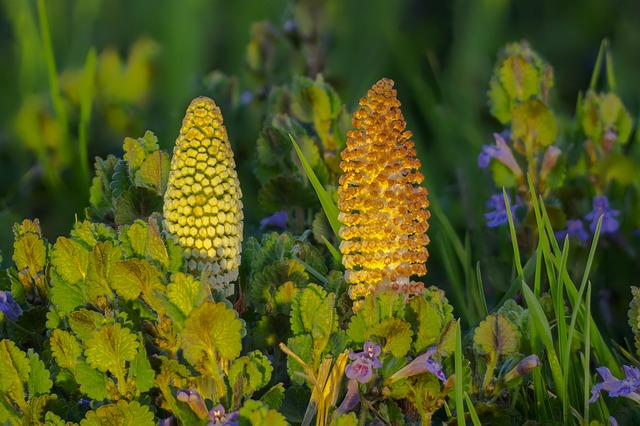Horsetail (Shavegrass) Herb

Also known as Equisetum arvense, scouring rush, shavegrass, and Field Horsetail,
Introduction Horsetail, not to be confused with cat-tail, is possibly the most abundant source of silica in the plant kingdom, so much, in fact, the herb can be used for polishing tin pewter.
Constituents More than 2/3 in-organic constituents, primarily silica and potassium salts. Horsetail from European sources contains the anti-allergy compound quercetin, but the same herb from North American and Asian sources usually does not. The plant also contains small amounts of nicotine.
Parts Used The above-ground parts of the plant, dried, cut, and powdered.
Typical Preparations Usually in tea, tinctures and encapsulations. Universally used in cosmetics.
Summary In very high doses, horsetail is sedative and anticonvulsant. The primary use of the herb, however, is as a diuretic. Gently stimulating increased urinary flow, horsetail helps "flush" infectious bacteria out of the bladder without altering the body's balance of electrolytes. The powdered form of the herb is better when electrolytes may be depleted. It's also the form of the herb being investigated as a treatment for age-related memory impairment.
Precautions When taking horsetail powder for its diuretic effect, be sure to drink extra water for maximum benefit. Avoid if there are kidney stones. Don't take horsetail herb if you take an ACE inhibitor for high blood pressure and you have congestive heart failure, as the combination of the herb and the drug can cause accumulation of excessive potassium. Not recommended while pregnant.
PURCHASE HORSETAIL (SHAVEGRASS) HERB EXTRACT
For educational purposes only. This information has not been evaluated by the Food and Drug Administration. This information is not intended to diagnose, treat, cure, or prevent any disease.
This information courtesy of MOUNTAIN ROSE HERBS, with full, written permission for reuse. For further traditional information concerning Horsetail, please visit this excellent resource from Botanical.com. Used with full, written permission.






